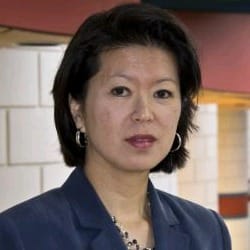
Michelle Tuveson, Executive Director of the Centre for Risk Studies, based at Cambridge Judge Business School, says risk management modelling will need to be revised in the light of the earthquake in Japan, and that new ‘multidisciplinary’ approaches are now needed.
Speaking to the Cambridge Judge Business School expert comment podcast series Michelle Tuveson said:
“From the perspective of risk this crisis will have an indelible affect. The Japanese earthquake was a large event, with the threats being well known. However, the subsequent effects of the initial catastrophe, will have to be better assessed and modelled for in the future.”
[soundcloud id=’36940635′]
She said nuclear safety standards would need to be ‘reassessed’ and that standards are ‘falling short’.
“The safety standards for nuclear power plants will most definitely have to be reassessed. There are 442 nuclear reactors in the World with another 65 under construction, and the Fukushima core meltdown is the latest in a string of nuclear accidents which include Chernobyl, Three Mile Island and also Windscale in Britain. Reassessment will need to be done in the context of the broader energy policy, but tragedies serve as wake up calls and many nations will reassess their strategies. Design standards for nuclear power plants aspire to a one in 10,000 chance of having a core meltdown, so we are clearly falling short of these safety standards.”
Insurance premiums will rise and assessors will need to look at the ‘interdependency’ of associated risks in the future, she said:
“The insured loss is being estimated at a 50 billion dollar loss across the insurance industry. It has to be absorbed by increased insurance premiums worldwide and across all lines of business.
“To be fair, risk modelling is a very complicated business; the risk of earthquake in Japan is modelled by most insurance companies operating in South East Asia, and that risk is very well known. What is not modelled so robustly are the subsequent effects of the catastrophe such as the tsunami risks and nuclear risks which follow. Assessing the interdependency of risks could be improved in the future.
“Risks are more and more interconnected and more globally connected across the world. We can no longer regard the quake that happens in Asia as an event in isolation. Its effects will have reverberations around the world. Our heart goes out to those undergoing great suffering.”
Michelle Tuveson went on to say that Arab unrest and other world events are leading to the need for a better assessment of the ‘local’ factors that give rise to risks:
“The Arab unrest affects the infrastructure and fabric of our daily lives, so perhaps this is another wake-up call for governments to make greater investment in new energy research.
“Everywhere has some level of risk and it is proving to be very interconnected. Our supply chains and trading networks are worldwide across many countries with their own different sources of risk, so we need to better understand local risk to have resilient trading networks globally.”
Catastrophe models will need to undergo change and take on a more sophisticated approach, she said:
“There will have to be changes in the models going forward and the next generation of catastrophe models will need to have a greater level of sophistication in areas of assessing threats systematically by reviewing the science and evidence base for threats. At the Centre for Risk Studies in Cambridge we hope to promote this next generation approach which is a holistic analysis of all different sources of threats. We will need to use approaches from complexity sciences, stressing the interdependencies of nodes and links and the super positioning of these event sets, while importantly not forgetting the human aspects of catastrophes too.
“Within the modelling community it is well known there need to be improvements, and what approach is taken to do this is debatable. But recent events have shown they need to be broader and to encourage a multi-disciplinary approach looking at risk and the unknown unknowns that creep in. We need to be able to correctly factor in for those events.”

